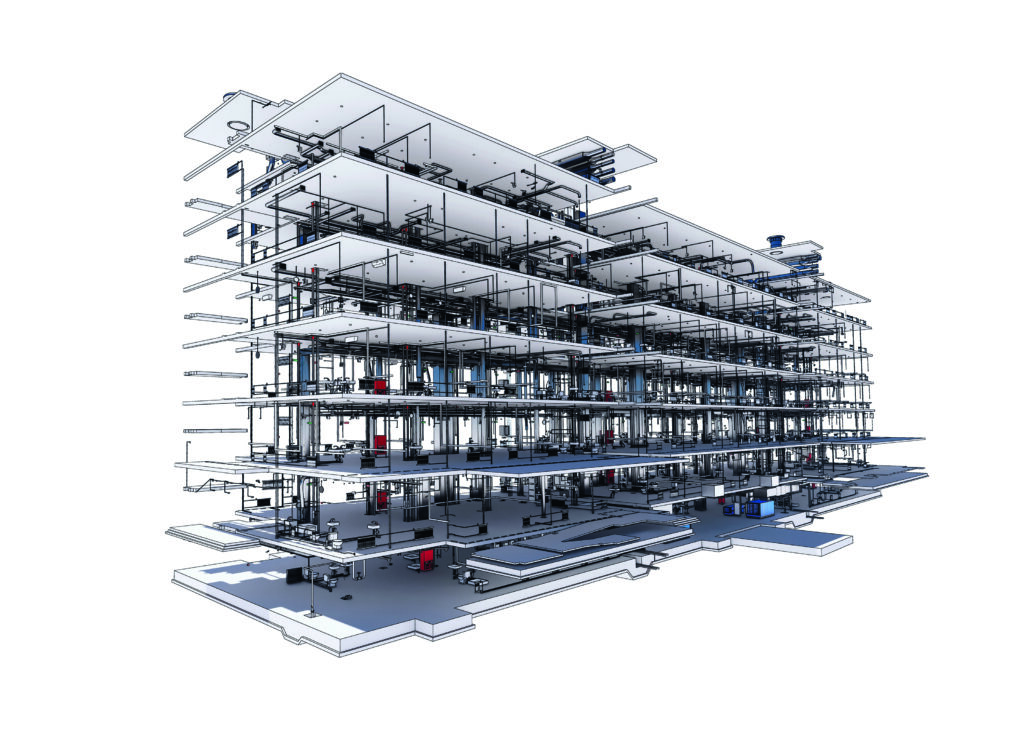 6 min
6 min
From the most disruptive start-ups to the longest-established groups, all players in the construction industry are bringing their strengths to bear in a race for innovation designed to meet climatic, environmental and demographic challenges. High-potential innovations are being developed at all stages of projects (upstream, construction, operation), from helping professionals make better choices, to reinventing materials, streamlining processes and developing new construction practices. Some of these new solutions do not shake up established practices, while others do (1).

OPTIMIZING EXISTING BUILDING STOCK
Innovations that optimize productivity in every link of the construction value chain
While they might not shake up the established order, they already have very significant potential for more environmentally friendly practices, with the advantage of easier market penetration as they fit in with existing business models. They have the potential for rapid development in the short term, having only to demonstrate their contribution in terms of productivity, costs and environmental impact.
Real-time data analysis
- Simulation tools to assess the energy performance of a design
- Life-cycle assessment tools to predict a building’s environmental impact
- IoT (Internet of Things) sensors in the operating phase to optimize energy consumption, occupancy and comfort
- Preventive and predictive maintenance
Also Read : Digital innovations: intelligence in the service of the climate challenge
More sustainable and efficient materials
- Low-carbon binders and admixtures developed for concrete in particular
- Lightweight materials
- Reuse of materials
- Materials with a high recycled content
- Materials with low CO2 emissions, that capture volatile organic compounds, materials easier to install
Also Read :
Timber construction goes low carbon
Giving gypsum a new lease of life : on the right track
S… for Secondary Raw Materials
Building site optimization
- Robotics/cobotics
- Digital applications
- Kitting: layout and cutting to size
- Waste management
- Just-in-time delivery
Also Read :
Sustainable building sites, 11 best practices
Water: the five habits of an exemplary building site
Circularity: Is Soil the New Construction Goldmine?

COLLECTING AND SHARING DATA THROUGHOUT THE LIFE CYCLE
Innovations that create interfaces between links in the value chain
These innovations, generally digital, facilitate the transfer of technical, contractual or financial information between stakeholders without disrupting the nature of existing relationships between customer / supplier / subcontractor. This avoids the need for multiple data entry, and ensures that information is well managed throughout the design, construction and operation cycle of a structure. These innovations, relatively simple to implement technically, nevertheless require that the stakeholders have prior understanding of the opportunities and risks associated with better data management. They also require mastery of digital technology and alignment with standards by everyone in the value chain if they are to deliver their full potential.
Data management and sharing
- Dematerializing and sharing data on products and equipment in an existing building, especially before renovation
- Using BIM (Building Information Modeling) from the design of a building through to its use. Digital design is a prerequisite for sustainable construction, enabling a building to exist virtually before it exists in reality
- A “Building Operating System” to coordinate the operation of all the technical work packages of a building (elevator, heating/cooling, fluids, etc.) as well as usage (occupancy, opening/closing of windows, control of blinds, etc.) in order to make the best predictive and preventive maintenance choices
- Solutions to dematerialize calls for tenders, to allow unequivocal price comparisons
- Adapting purchasing approaches to make informed choices that take into account carbon reduction in addition to the cost of materials


IN-DEPTH TRANSFORMATION OF PRACTICES
Innovations that require a shake-up of established practices
Led by established players and start-ups a like, driven by a wish to “change the world”, some ground-breaking innovations are being used to overcome traditional barriers and revolutionize the construction sector. They often involve a change to the value-creation model and a rethink of how stakeholders cooperate.
Adopting new ways of doing things
- Lightweight construction
- Off-site and modular construction
- Building adaptability
- Circular economy : avoiding the production of construction waste, reusing products, recycling or recovering waste
- 3D-printing of concrete
- Bio-sourced materials
Also Read : The building of the future will be a materials bank, designed so that everything is ready to be reused
Conclusion
To succeed in scaling up, these innovations – and those that will emerge in the construction sector in the future – need to get their entire ecosystem on board. Why? Quite simply because an innovation, even the least disruptive, means doing things differently, and thus having to adapt.
Market organization, the regulatory environment, business practices and economic models often have to change to “absorb” the innovation. The role of established players in the construction industry can thus prove decisive in positively engaging all stakeholders in the necessary transformation processes.
(1) Source: Academy of Technology, “Innovation in Construction: contribution from start-ups to transformation of the sector”.








